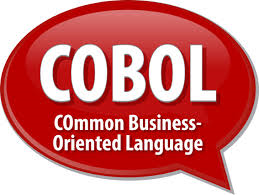|
|
|||||||
| COBOL keeps me perform | |||||||
|
|
|
||||||
| Home | Expertise | VUR | Contact | ||||
 |
 |
||||
|
History In 1959, COBOL was commissioned by the American DoD (Department of Defense), developed by, among others, Rear Admiral Grace Murray Hopper as a standard language for business applications that could retrieve, process and store large amounts of data accurately and efficiently. It had to be a language that was easy to read, write and maintain in comparison with the usual languages at that time. The first version of COBOL dates back to 1960. |
COBOL Expertise needed? The owner of this website has been working with the COBOL programming language since 1996 and can be used as: - Functional designer; - Technical designer; - Tester; - Developer. Currently the owner has an ongoing contract until 1 January 2023.
|
||||
 |
Grace Murray Hopper |
||||
|
The home base of COBOL is the IBM mainframe, but today COBOL also runs on Windows and Unix. |
|||||
|
Versions and variations of COBOL COBOL seems to be one language, but appearances are deceptive. Besides the different versions of this programming language, there are many different dialects. Many attempts to standardize this language have therefore failed. Many dialects (deviations or extensions) have arisen to make optimal use of the environment in which they operate (operating system) or the specific hardware used. |
ISO COBOL 2002 The International Commission for Information Technology Standards (Incits) raised a new version of the COBOL programming language to an official standard in 2002. After COBOL '68, COBOL '74, COBOL '85, the expansion of COBOL '85 in 1989, it is the turn of ISO COBOL 2002. The American organization thus approved improved and entirely new elements in the language. This includes options for object oriented programming, Boolean data typing, file sharing and document locking. Oracle, Microsoft, HP, IBM and SUN are members of Incits. |
||||
|
COBOL In articles about COBOL we sometimes talk about a 2CV, with or without a 40+ behind the wheel. COBOL has an old-fashioned image among many ICT people, because many COBOL programs are decades old.
|
|
||||
|
|
|||||